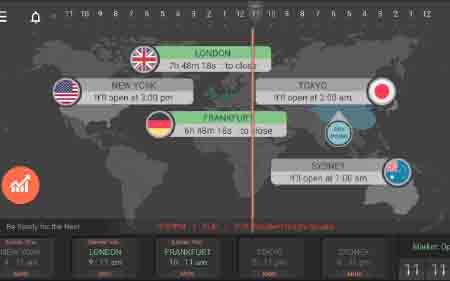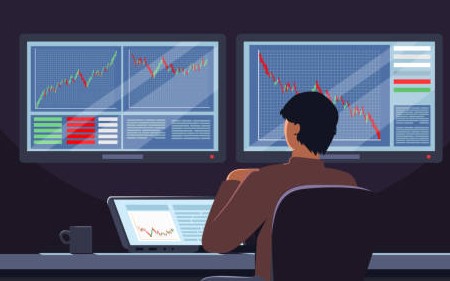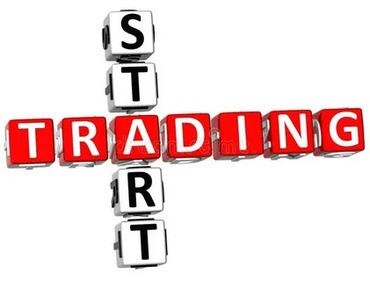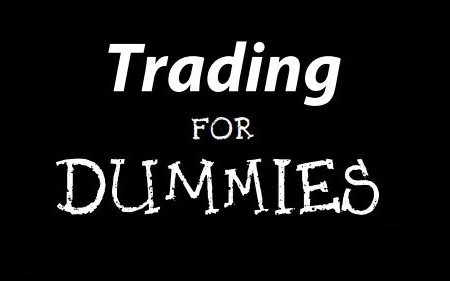What is the best time to trade forex?
 07 / 03 / 22
Visitors: 143
07 / 03 / 22
Visitors: 143
One of the many advantages of the Forex market is that trading is open 24 hours a day. But how then to determine the best time to trade Forex?
To be a successful trader, you need to know when to trade and when to refrain from trading. Objectively speaking, there is no single best time to trade Forex - it all depends on individual preferences, goals and trading strategies of each. In this article, we will look at the impact of day and night in different parts of the world on different currency pairs and, accordingly, on your trading. We will also focus on the two main fundamental forces - supply and demand - to determine the best time to trade Forex.
Forex trading time
The Forex market operates around the clock, five days a week. The trading day officially begins in Australia when the Sydney and New Zealand institutions open around 9 am local time (GMT+10), marking the start of the Asia-Pacific trading session. They are joined in the next two hours by Tokyo, where most of the Asian currency trading takes place, followed by Hong Kong and Singapore.
It is at the beginning of the Asia-Pacific session on Sunday night that the foreign exchange market opens for the whole week, and individual traders and institutions are trying to stabilize the situation after the events that could have happened over the weekend. This is the only time of the week when gaps occur regularly, which means that if gaps do not suit your trading strategy, weekend trading is not the best Forex trading option for you.
At 7:00 am GMT (GMT 0), the Asia-Pacific trading session slowly gives way to the London/European trading session. The working day in Frankfurt - the financial heart of Europe - starts an hour earlier than London. At 12:00 GMT, the US trading session begins, which starts in New York and then continues in Los Angeles. By nightfall in Los Angeles, activity in the markets is reduced, and the trading day ends. Since the world trading sessions gradually replace one another, there is an intersection of trading sessions.
If you are trying to determine the best time to trade currency pairs and decide for yourself when Forex trading will potentially bring the most profit, it is important to know the Forex schedule, which currencies or markets are the most liquid and / or volatile during a given trading session.
Liquidity in Forex
Liquidity - being able to find a counterparty for every transaction - can be a real problem in some financial markets, but not in Forex. Most retail traders trade with a broker who is always ready to fill their trade order.
In these cases, problems can only arise when the broker itself is having difficulty executing orders in the interbank market. An example of such a situation occurred on January 15, 2015, when the Swiss National Bank depegged the Swiss franc to the euro - this led to the collapse of the currency pair and the formation of a gap. Forex is a real miracle in terms of liquidity, and gaps (price gaps) are so rare that usually a novice trader first sees a gap with his own eyes only after a few months of trading.
Forex volatility
Volatility determines how strong price movements can be. This exponentially varies greatly depending on the currency pair and the period of the day. It is vital for traders to understand what volatility is because the vast majority of trading strategies are incompatible with periods of high volatility. The tests carried out clearly indicate that, all other things being equal, adjusting the trading schedule in accordance with the preferred level of volatility makes a noticeable difference in the trading result - profit and loss - of the trader.
For example, an oscillator-based trading strategy that is best suited for markets that are in a sideways trend and catches prices “bounces” from key levels will not bring much profit to the trader in case of price breakouts of these levels due to high volatility. When creating or considering a strategy, determine at what level of volatility it will work and benefit, and apply it accordingly.
When to Trade Forex: Supply and Demand
Why do volatility levels change depending on the instrument, day of the week, and why does the price move at all? The answer comes down to supply and demand. The Forex market and any other market moves as a result of a huge number of outstanding orders. The more of them and the larger they are in volume, the higher will be the volatility in the market. Now let's look at what is the main driving force of the market.
Various organizations place the largest orders in the largest quantities and on time. Unlike private traders who can trade at their own discretion, institutions operate according to business hours trading capitals of the world. For this reason, the 24-hour Forex trading day is divided into four international trading sessions: Asian, Pacific, European and American.
The largest trading volume is observed at the intersection of the European and American trading sessions. This is important to know as not all trading strategies work well in illiquid markets.
The ratio of trading volumes during trading sessions:
- London trading session - 35% of total Forex volume
- New York - 20% of the total trading volume
- Sydney - 4% of the total trading volume
- Tokyo - 6% of the total trading volume
- The best time to trade
- Is there a better time of the year to trade Forex? Or a better day or month?
There are key periods for Forex trading, which can be more or less profitable depending on daily, weekly and monthly trends.
In the morning, transaction volumes and prices may skyrocket due to the release of news that has appeared since the previous market close. An experienced trader can recognize patterns that suit him and make a quick profit, but a less experienced trader can suffer serious losses as a result. So if you are a beginner, you may want to avoid trading during these volatile hours - or at least the first hour.
On the other hand, the first three hours of every major trading session are usually the best in terms of momentum, trend, and pullback. This is the time when traders find the best trading opportunities and can make really good money.
In addition, for experienced intraday traders, the first 15 minutes after the open - providing increased volatility and complex market movements - usually offer opportunities for some of the biggest trades of the day.
The best time to trade during the day
The morning hours are a key time for statements by monetary policy makers and other relevant press releases. At the beginning of the day, institutional traders are most active as this is the best time to trade Forex. Such activity contributes to the increase in the level of volatility. The logic behind the relevance of trading a particular currency here is simple: if it is morning in London, then financial news will be published by the Bank of England, and British companies will hedge orders to protect their positions in pounds sterling.
Therefore, it is logical that British banks and funds will speculate on the market. UK private traders are most active during the day but their impact will be relatively minor. The reason for this is the small amount of trading they do and also because individual traders are less tied to the currency. The same logic will apply to other countries and currencies, so if high market volatility is required as part of your trading strategy, then the best time of day for you to trade Forex will coincide with the activity of the most powerful driving forces.
The volatility of European currencies and the currency pairs they are part of will be the highest during the London trading session. In this case, we are talking about EUR, GBP, and CHF. Similarly, Asia Pacific currencies such as JPY, AUD, NZD and to a lesser extent SGD and HKD will trade predominantly during the Asia Pacific session. Finally, USD, CAD, and MXN volatility will increase sharply during the US session.
As mentioned above, due to the fact that trading sessions overlap, and currency pairs often consist of currencies of countries located in different regions, volatility spikes are somewhat distorted.
The intersection of trading sessions London / New York is the most serious. This is not surprising given that EURUSD is the most traded pair and GBP/USD is the third most traded pair. Tokyo/London is another major crossover as most of the US momentum is relatively small at this time, so currency pairs such as EUR/JPY and GBP/JPY are most heavily traded. Finally, since Tokyo is 16 hours ahead of Los Angeles, there is the least trading activity during this crossover.
It should also be remembered that most of the volume of the foreign exchange market comes from the spot Forex market, which is mainly traded by retail traders. While the spot market is open 24 hours a day, 5 days a week, the futures market is pegged to physical exchange centers. In particular, the Chicago Mercantile Exchange and several of its partners in the US and abroad (called introducing brokers). The importance of this fact lies in confirming that in the futures market, currency pairs can only be traded against the US dollar.
When trading takes place on the stock exchange is an important question. Only the Forex market works 24 hours a day - stock exchanges do not work like that. The commodity market is the least liquid market - its trading hours are shorter and differ for each contract.
Best time to trade Forex: days of the week
At the opening of the trading week on Sunday night trading volumes are light as the US and European stock markets are still closed. Monday is usually a quiet day, unless elections or other important world events take place at that time. Until Monday morning, low market volatility and extended spreads remain.
This does not mean that this trading period is not suitable for anyone. Some traders like to trade at night with little volatility, although the spreads are usually large at this time. Moreover, overnight trading in the currency and stock markets can be quite successful.
A complete list of unscrupulous brokers, that we do not recommend working with is available here.







